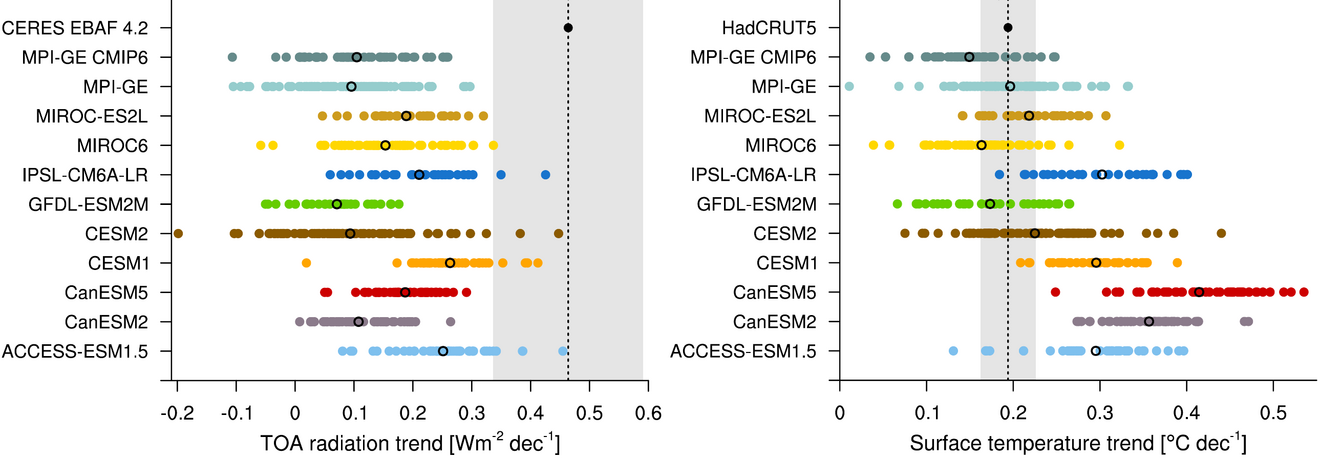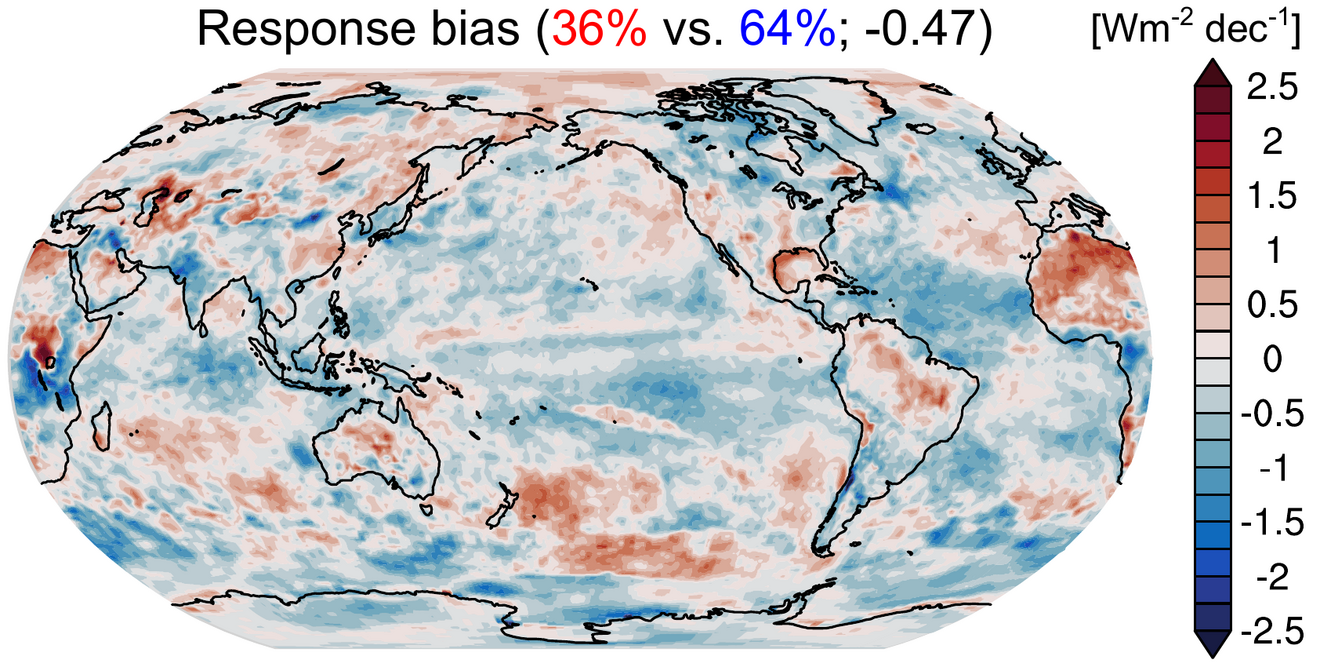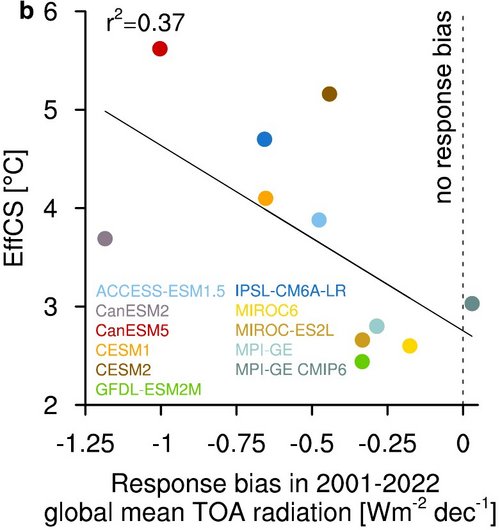Coupled climate models systematically underestimate the radiation response to surface warming
A realistic representation of the top-of-the-atmosphere (TOA) radiation response to surface warming is key for trust in climate model projections. However, whether climate models reproduce the observed coupling between TOA radiation and global and local surface warming was unresolved so far, partly because of the shortness of the observational record.
Olonscheck and Rugenstein tackle the problem of the 22-year short observational record of TOA radiation by accounting for the internal variability of the climate system, which is strong on such short timescales. They compare the observed trend to initial-condition large ensembles of eleven climate models. These large ensembles allow one to account for both the internal variability within the period 2001-2022 and for structural differences between the models. The authors find that coupled climate models systematically underestimate observed TOA radiation trends even if they reproduce observed surface temperature trends (Figure 1).

The authors test for different hypotheses why models underestimate the observed TOA radiation trend and show that the underestimation is caused by a too weak local coupling between surface warming and TOA radiation, referred to as response bias (Figure 2). The too weak coupling stems from both larger regions and greater magnitudes of underestimating than overestimating the observed TOA radiation trends (more blue than red regions). This response bias stems from both the models' inability to reproduce the observed large-scale surface warming pattern and from errors in the atmospheric physics affecting short- and longwave radiation. The relative role of the two reasons differs strongly across models.

Finally, Olonscheck and Rugenstein find that the systematic response bias in surface-TOA coupling strength over the last 22 years correlates with the long-term climate response, called effective climate sensitivity. Models with a stronger response bias, that is, a weaker TOA radiation response to surface warming, accumulate too much energy in the atmosphere. This overestimated accumulation results in a higher effective climate sensitivity of these models (Figure 3). Hence, the findings are a new line of evidence that less-sensitive models more realistically reproduce climate change over the last 22 years than more-sensitive models. The findings imply that a better understanding of both the role of surface temperature patterns and model errors in representing atmospheric physics is needed to be able to better constrain the Earth’s climate sensitivity.

Original publication
Olonscheck, D., & Rugenstein, M. (2024). Coupled climate models systematically underestimate radiation response to surface warming. Geophysical Research Letters, 51, e2023GL106909. https://doi.org/10.1029/2023GL106909
Contact
Dr. Dirk Olonscheck
Max Planck Institute for Meteorology
dirk.olonscheck@mpimet.mpg.de

